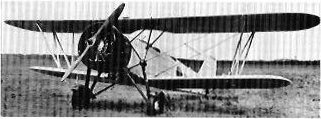![]() The Pacific War Online Encyclopedia
The Pacific War Online Encyclopedia
|
| Previous: Kharagpur | Table of Contents | Next: Ki-17 "Cedar", Japanese Trainer Aircraft |

U.S. Air Force. Via Francillon
(1979)
Tachikawa Ki-9 KAI "Spruce"
| Crew |
2 |
| Dimensions | 33'10" by 24'8" by 9'10" 10.32m by 7.525m by 3m |
| Weight | 2238-3142 lbs 1015-1425 kg |
| Speed | 149 mph 240 km/h |
| Cruising speed | 93 mph 150 km/h |
| Climb rate | 11 feet per second 3.4 m/s |
| Power plant | One 350 hp (261 kW) Army Type 95 (Hitachi Ha-13) nine-cylinder radial engine, driving a two-bladed wooden propeller. |
| Range | 325 miles 520 km |
| Production | Tachikawa Hikoki K.K. at Tachikawa: 2395 production aircraft (1935-1942) Tokyo Koku K.K.: 220 production aircraft (1944-1945) |
Tachikawa produced a trainer prototype, the R-5,
in 1933 as a private venture. This was a very small aircraft with
a 125
hp (93 kW) engine, but it piqued the Army's interest enough that
Tachikawa
was instructed in April 1934 to design a trainer that could be
used for
either basic or intermediate training, depending on the engine
with
which it was equipped. Though skeptical of the concept,
Tachikawa's
design team, led by Endo Ryokichi, designed the Ki-9 to take
either a
350 hp (261 kW) engine and full blind instrumentation for
intermediate
training or a 150 hp (112 kW) engine and only the most basic
instrumentation for basic training. Three prototypes were ready
late
1934 and the first made its maiden flight on 7 January 1935.
Handling
and maneuverabily were disappointing and modifications were made
to
shift the center of gravity further aft. The third prototype was
the
first basic trainer variant and, in its case, the center of
gravity was
too far aft. As a result, only the intermediate trainer version
was
accepted for production.
The Ki-9 "Spruce" remained the Japanese Army's
main
intermediate trainer aircraft throughout the Second Sino-Japanese War and during the
Pacific War. It was also used
by the Thai and Manchurian air forces, and
postwar
by the Indonesian
air force.
References
The Pacific War Online Encyclopedia © 2009 by Kent G. Budge. Index